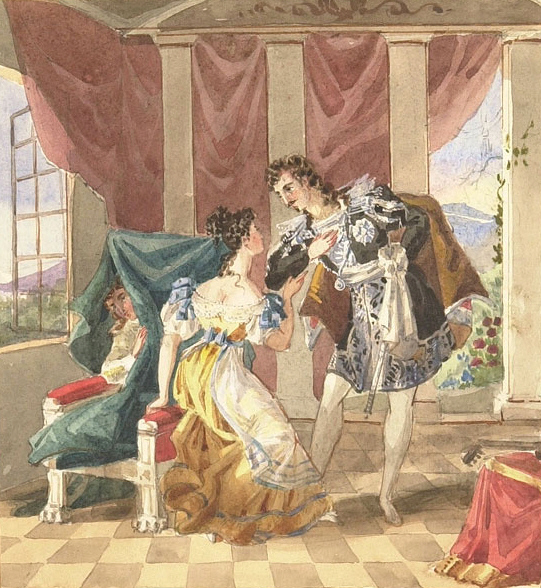 |
| A scene from Act I. Image: Wikipedia Commons |
Mozart speaks of wanting to write a “new kind of opera” and this more realistic portrayal of life in all its complexity, as opposed to the old “opera seria” with its aristocrats, mythological and historical figures is finally eclipsed forever with the appearance of the Mozart-Da Ponte, “The Marriage of Figaro.”
Its plot by contrast is the simplest thing in the world. A day of events in which a young couple wants to get married and the obstacles placed in their path by older generations and diverse classes. The “simple conflict” of rival lovers (the Count vs. Figaro) for the hand of Susanna explodes into an exploration of well, everything. Contending classes, opposing generations, aspects of love- middle age and old age in pursuit of youth; youth aspiring to possess everything from a superabundance of emotion. Then there is an encyclopedic exploration of the moral world through comedy. Lies, hypocrisy, adultery, extortion, flirtation, nostalgia, the threat of violence, hope and love all reflected in a variety and depth of musical expression that is inexhaustible. Alternately the Count, Figaro, Susanna, the Countess and Cherubino as well as Barbirina all give us unforgettable music from the first moments to the last ensemble: “Cinque, deici” (counting space for a bed!), “Se vuol ballare, Non piu andrai”; Cherubino’s youthful effusion “Voi che sapete,” and the Countess’ affecting “Porgi Amor”:
Porgi, amor, qualche ristoro
Al mio duolo, a’miei sospiri:
O love, bring some relief
To my sorrow, to my sigh;
O give back my love one
Or in mercy let me die.
So influential is the opera that it served as the touchstone for musical comedy (operetta and Broadway also) for over two centuries since its premiere in 1786. The comedies of Verdi, Rossini, and Bellini, as well as Strauss’ “The Rosenkavalier” and even John Corigliano’s “The Ghosts of Versailles” echo the Mozartian model.
Please tune in this Saturday afternoon at the opera for perhaps the greatest of all comic operas, Mozart’s “The Marriage of Figaro.” This Saturday at noon on KPAC and KTXI.
--Ron Moore
No comments:
Post a Comment